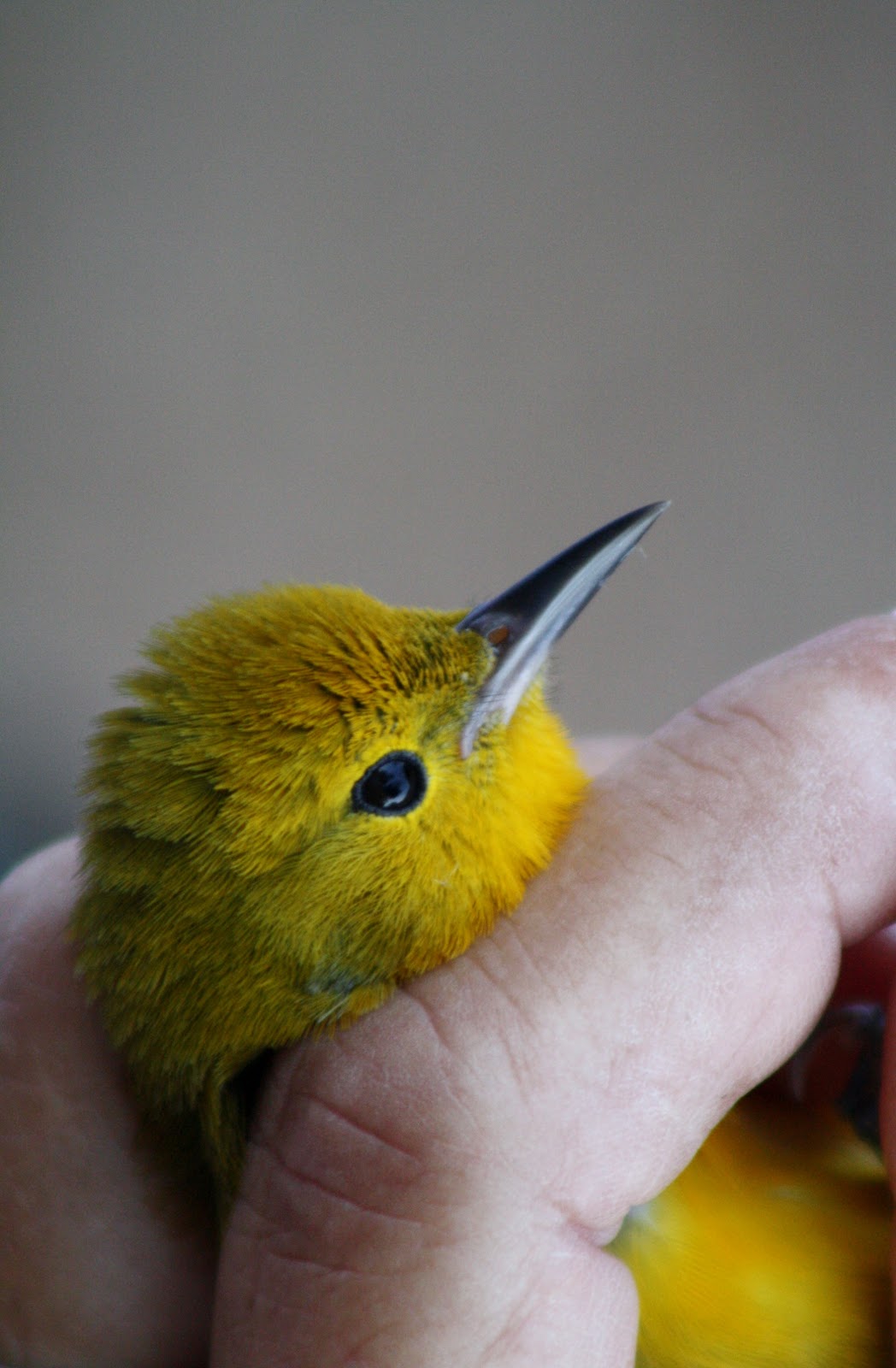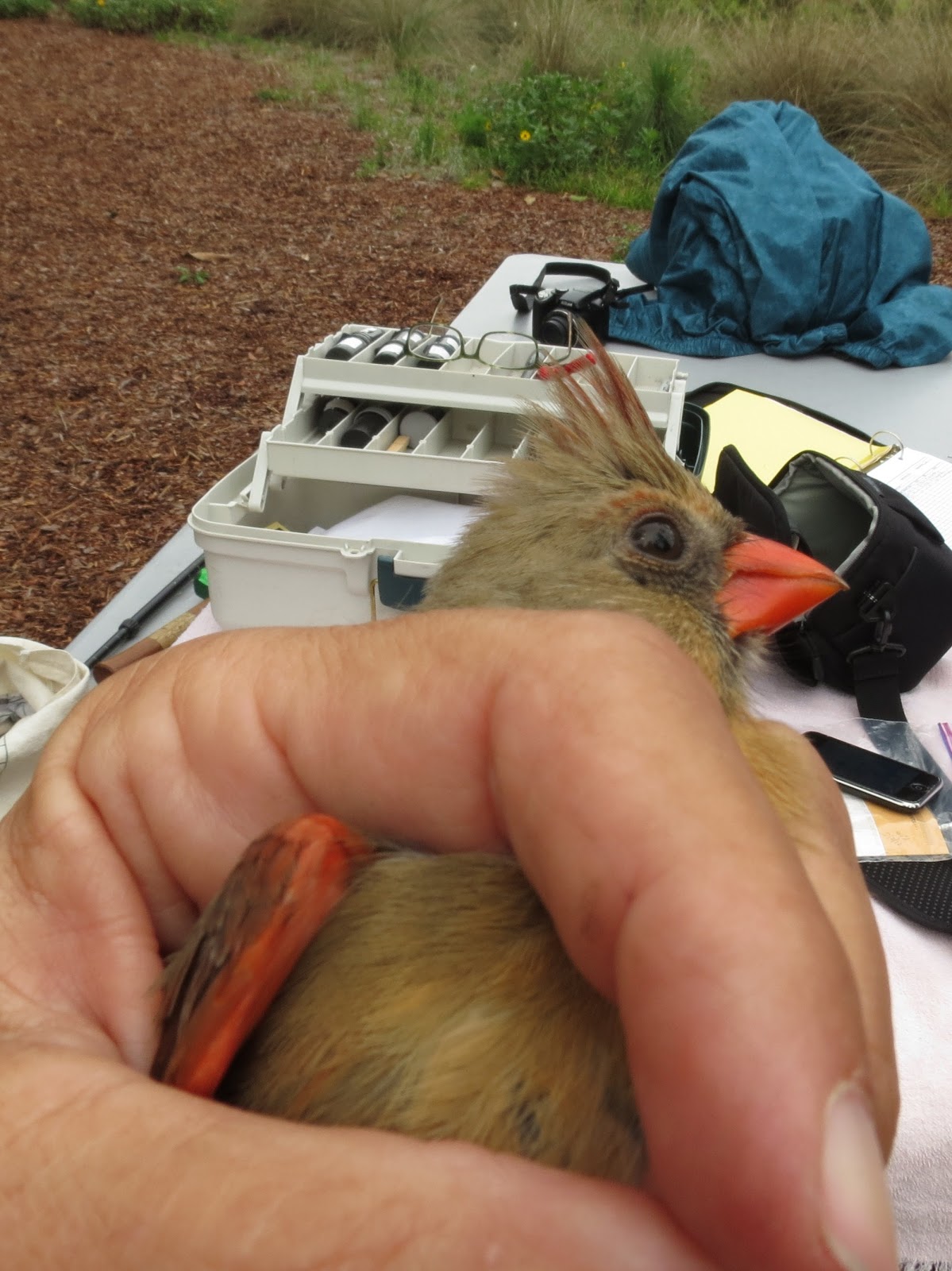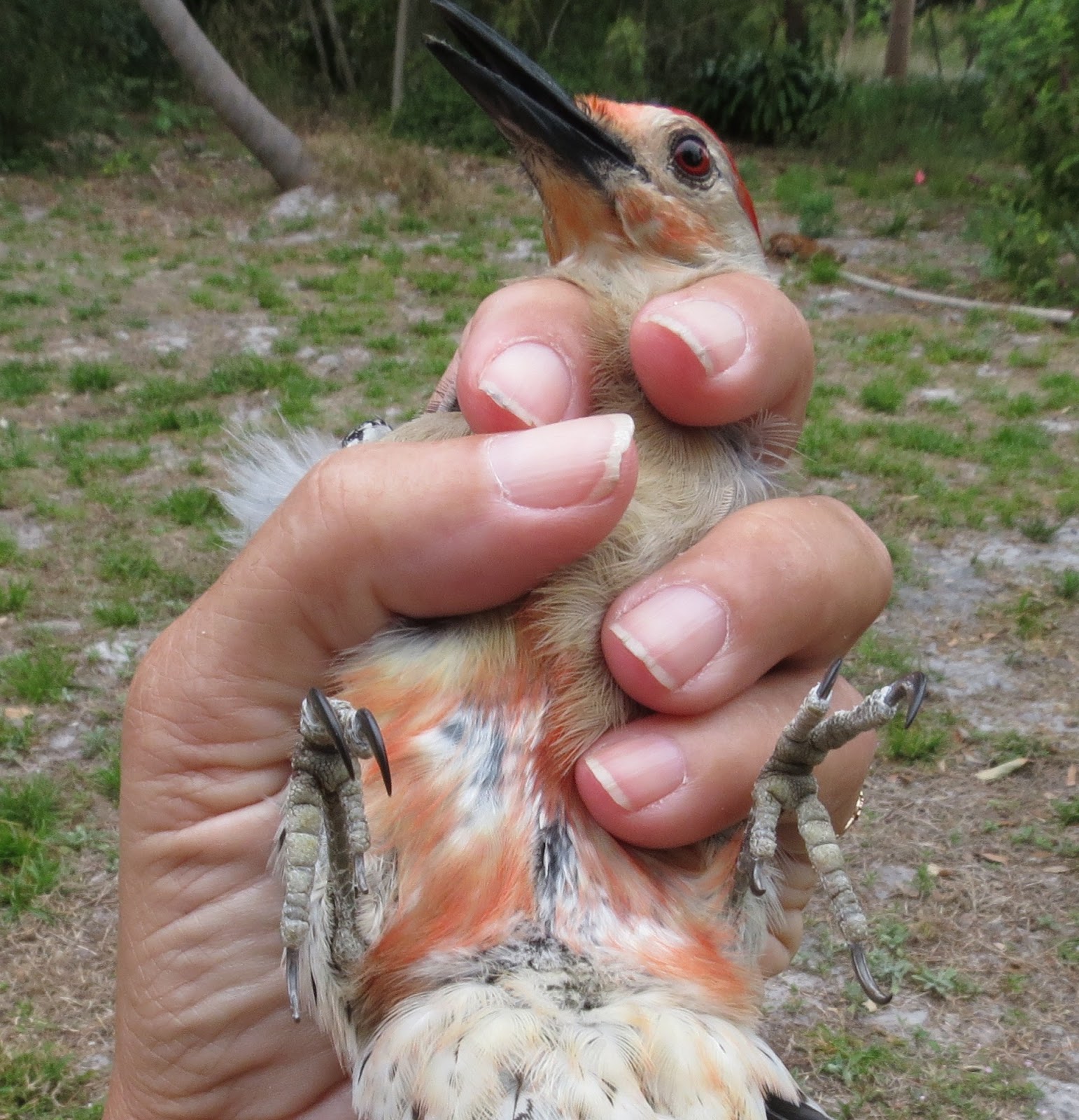We had a busy day today and it started off with a treat. We heard a Chuck-will's-widow singing in the dark of the early morning. The weather forecast had us concerned but we did not get any of the "R" word, just very muggy weather.
Quite soon we caught (you guessed it) Gray Catbirds! For the day we had a total of 4 new banded catbirds and 2 recaptures; one was banded on December 16 and the other on February 12. There seemed to be more Gray Catbirds present than any other time since we began. One can only assume that more are moving through. This also makes me wonder if the one from December went somewhere else and is now retracing its "steps" back through Possum Long.
We were also delighted to note the return of Yellow-crowned Night-Herons to Possum Long. For the past few years (and maybe longer) they have nested on the property.
Yellow-crowned Night-Heron
Photo by Pat Marshall
Returns and recaptures were the theme of the day. We recaptured the Northern Parula from last week and the male American Redstart from January 22. We had seen him (with his band) on the property after he was originally banded so it is fairly safe to say he overwintered on or near the property.
American Redstart male
Prior to recapturing the male American Redstart, we did catch a new female-looking American Redstart. It is hard to eliminate the possibility that it could be a second year male as they look much like the adult female. Most males would start to show black mottling on the head or face but not all of them do so in March.
American Redstart
American Redstart
We also banded a pair of Northern Cardinals. The male was quite bright. We found one body feather still in the sheath that protects the feather as it grows in.

Northern Cardinal female Northern Cardinal male
Northern Cardinal male - body feather growing in
Northern Cardinal - Nancy Price taking his picture
and the picture Nancy Price took!
Most fun was having a pair of Ruby-throated Hummingbirds. At one point in the day Nancy Price said she had not heard any but not long after that we heard one. On the next net run there were two in the net. The male was molting in some of his iridescent throat feathers (gorget). The female was molting tail feathers. Though small, these are tough birds and they flew off in fine fashion after we extracted them and looked them over. They were released unbanded as I do not have the permits to do that.
Ruby-throated Hummingbird - female
Photo by Nancy Price
Ruby-throated Hummingbird - male
Photo by Nancy Price
Ruby-throated Hummingbird with tail feathers growing in
Photo by Nancy Price
As always, I am very thankful to those who volunteer at the station.
Next scheduled banding: March 26































.jpg)